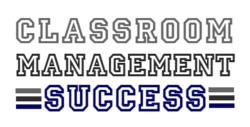I am currently teaching pre-K right now. That’s 2.6 – 3.5 year olds. Whenever I tell people that I’m teaching kids that young, first thing that comes to their minds are “That must be a jungle!” People always assume that since they are so young, they can’t understand instructions. But they do. They do if you teach them how to do things properly. Children crave structure. They do if you’re consistent with what your teaching and the “consequences” if they don’t follow. Little kids can be taught to follow procedures. And once they know these procedures, your classroom is going to be a stress-free space.

The strategy for children to follow procedures is the same for any level. What differs for each level is the time frame of children learning the procedures in school. Like for example, pre-k will take some patience and time for them to grasp a system, while high school understands that there is a system that should be followed right on the first day of school.
- Establish a routine right on the first week of school
Right when they enter the classroom, greet them a good morning and ask them to put their bags in their cubbyholes or in the bags corner. Before recess, have them line up to go to the nearest sink to wash hands. Children will surely recognize and understand that these simple steps are to be done everyday at a specific sequence.
- Have a daily schedule
Having a daily schedule is a must in every classroom. Children are more comfortable knowing what’s going to happen next. They like to expect. They want to be assured that after this, this, and this happen, they will be fetched by their parents or they will now ride the bus home. The children gets assurance, and they will be more likely to trust the teacher more.
- Consistency is key
Being consistent with the routines, daily schedules, and also the consequences for misbehavior definitely yield positive results. Familiarity, trust, and respect are formed between the teacher and the students. Once these are built and intact, you will see the difference of the behavior of your students from the first day of class because now they know what to do and what to expect. They can now do things and calm down on their own, and listen and follow your directions.
Creating a stress-free space in the classroom is not impossible even when you’re managing a classroom of 2-3 year olds. It just takes time and patience through being consistent.



 A team of teachers and aides who know how to handle and effectively connect with students with special needs is also needed for successfully managing a stress-free classroom. One teacher cannot handle a classroom of 10. He or she needs a teacher assistant, and depending on the IEP, if needed, therapists. Children would want to go to school if they know that the people who are taking care of them are able and treat them with care and respect. Patience and a kind heart is key to working in this type of classroom.
A team of teachers and aides who know how to handle and effectively connect with students with special needs is also needed for successfully managing a stress-free classroom. One teacher cannot handle a classroom of 10. He or she needs a teacher assistant, and depending on the IEP, if needed, therapists. Children would want to go to school if they know that the people who are taking care of them are able and treat them with care and respect. Patience and a kind heart is key to working in this type of classroom.